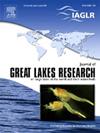洄游的海灯鱼在遇到反捕食者线索时会加快速度,但短期决策却更糟糕
IF 2.5
3区 环境科学与生态学
Q3 ENVIRONMENTAL SCIENCES
引用次数: 0
摘要
越来越多的证据表明,一种天然的驱避剂--受伤后释放的警报线索--可用于引导入侵鱼类的行动,以实现管理目标。然而,由于这一过程涉及感知,对感官信息的下游认知处理会影响有关反捕食者行为表达的决策。反应习惯化(即反复或持续接触某种线索会降低行为反应率)是将捕食线索用作保护工具时经常遇到的挑战。可以通过改变气味释放的浓度和/或时间模式(脉冲气味与持续释放气味)来延迟或防止习惯化。我们在双选迷宫中研究了不同气味浓度和暴露方式(连续与脉冲)对成年海鳗(Petromyzon marinus)对同种警报线索行为反应的影响。我们发现,无论暴露机制如何,暴露于报警线索都会诱发更频繁、更快速的逆流运动。还有明显的证据表明,速度与准确性之间存在权衡,即需要更长时间才能到达迷宫中分叉点的海灯鱼更有可能避开被警报线索激活的手臂。我们无法确定增加浓度或脉冲报警提示对防止习惯化的价值,因为习惯化并未发生。我们推测,在测试前,由于操作可能无意中模拟了捕食者的失败攻击,导致了对警报提示的不习惯。如果情况属实,那么在使用报警提示作为驱避剂来操纵海鳗的行动时,加入去习惯化刺激可能会被证明是一种保持报警提示有效性的有效方法。本文章由计算机程序翻译,如有差异,请以英文原文为准。
Speed kills? Migrating sea lamprey increase speed when exposed to an antipredator cue but make worse short-term decisions
There is growing evidence that a natural repellent, injury-released alarm cues, can be used to guide the movements of invasive fishes to achieve management goals. However, because this process involves perception, downstream cognitive processing of sensory information affects decisions regarding expression of antipredator behavior. Response habituation, wherein repeated or continuous exposure to a cue reduces behavioral response rates, is an oft-cited challenge for use of predation cues as conservation tools. Habituation may be delayed or prevented by altering the concentration and/or the temporal pattern of odor release (pulses of odor vs continuous application). We examined the effects of varying odor concentration and exposure regime (continuous vs pulsed) on behavioral response of adult sea lamprey (Petromyzon marinus) to conspecific alarm cue in a two-choice maze. We found that exposure to alarm cue induced more frequent and rapid upstream movement, regardless of exposure regime. There was also clear evidence of a speed-accuracy tradeoff, wherein sea lamprey that took longer to arrive at the bifurcation in the maze were more likely to avoid the arm activated with alarm cue. We could not ascertain the value of increasing concentration or pulsing the alarm cue on preventing habituation, as habituation did not occur. We hypothesize dishabituation to the alarm cue occurred immediately prior to testing due to handling that may have inadvertently simulated an unsuccessful predator attack. If true, incorporating dishabituating stimuli may prove a useful means to maintain the efficacy of alarm cue when applied as a repellent to manipulate the movements of sea lamprey.
求助全文
通过发布文献求助,成功后即可免费获取论文全文。
去求助
来源期刊

Journal of Great Lakes Research
生物-海洋与淡水生物学
CiteScore
5.10
自引率
13.60%
发文量
178
审稿时长
6 months
期刊介绍:
Published six times per year, the Journal of Great Lakes Research is multidisciplinary in its coverage, publishing manuscripts on a wide range of theoretical and applied topics in the natural science fields of biology, chemistry, physics, geology, as well as social sciences of the large lakes of the world and their watersheds. Large lakes generally are considered as those lakes which have a mean surface area of >500 km2 (see Herdendorf, C.E. 1982. Large lakes of the world. J. Great Lakes Res. 8:379-412, for examples), although smaller lakes may be considered, especially if they are very deep. We also welcome contributions on saline lakes and research on estuarine waters where the results have application to large lakes.
 求助内容:
求助内容: 应助结果提醒方式:
应助结果提醒方式:


